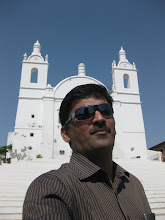The 5 'S' Japanese Process: Seiri, Seiton, Seiso, Seiketsu, Shitsuke
The 5S Process, or simply "5S", is a structured program to systematically achieve total organization, cleanliness, and standardization in the workplace. A well-organized workplace results in a safer, more efficient, and more productive operation. It boosts the morale of the workers, promoting a sense of pride in their work and ownership of their responsibilities.
"5S" was invented in Japan, and stands for five (5) Japanese words that start with the letter 'S': Seiri, Seiton, Seiso, Seiketsu, and Shitsuke. An equivalent set of five 'S' words in English have likewise been adopted by many, to preserve the "5S" acronym in English usage. These are: Sort, Set (in place), Shine, Standardize, and Sustain.
1Seiri Sort Tidiness Throw away all rubbish and unrelated materials in the workplace
2Seiton Set Orderliness Set everything in proper place for quick retrieval and storage
3Seiso Shine Cleanliness Clean the workplace; everyone should be a janitor
4Seiketsu Standard Standardization Standardize the way of maintaining cleanliness
5Shitsuke Sustain Discipline Practice 'Five S' daily - make it a way of life; this also means 'commitment'
Seiri (Sort)
It refers to the act of throwing away all unwanted, unnecessary, and unrelated materials in the workplace. Everyone in the organisation involved in Seiri must not feel sorry about having to throw away things. The idea is to ensure that everything left in the workplace is related to work. Even the number of necessary items in the workplace must be kept to its absolute minimum. Due to seiri, simplification of tasks, effective use of space, and careful purchase of items follow.
Seiton (Set)
It means orderliness for efficiency. This step consists of putting everything in an assigned place so that it can be accessed, retrieved as well as returned in that very place quickly. If everybody has quick access to files or materials, work becomes efficient, and hence productive. The correct place, position, to hold every tool, item, or material must be chosen carefully . Every item must be allocated its own place for safekeeping, and each location must be labeled for easy identification of thing held.
Seiso (Shine)
It empowers everybody as a janitor and emphasises on cleaning up the workplace and giving it a 'shine'. Cleaning must be done by everyone in the organization, from Subordinates to Chief / In –charge. It is fairly good idea to have every area of the workplace assigned to an individual or group of persons for cleaning not leaving any area uncleaned. Everyone should see the 'workplace' through the eyes of a visitor - always thinking whether it is clean enough to make a good and long lasting impression.
Seiketsu (Standard)
It is standardized clean-up consisting of defining the standards by which personnel must measure and maintain 'cleanliness'. Seiketsu covers both personal and environmental cleanliness. Evry individual must practice 'seiketsu' starting with themselves. Visual management by color-coding and standardized coloring of surroundings can be used for easier visual identification of anomalies in the surroundings. This will train personnel to detect abnormalities using their five senses and to correct such abnormalities immediately.
Shitsuke (Sustain)
This means discipline and needs commitment to maintain orderliness and to practice the first 4 S as a way of life. It eliminates bad habits and allows practice of good habits. Shitsuke once achieved, every personnel voluntarily observe cleanliness and orderliness without having to be reminded by superiors.

No comments:
Post a Comment